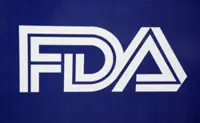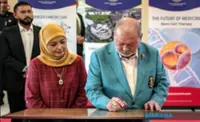Genetic and lifestyle factors such as smoking, poor diet and a family history of liver disease may increase the risk of liver cancer. Adopting healthier habits like balanced eating and regular exercise may support liver health and reduce disease progression. — 123rf
LIVER cancer is the fourth most common cancer in Malaysia and also the fourth leading cause of cancer-related deaths.
According to Pantai Hospital Kuala Lumpur consultant hepatobiliary and liver transplant surgeon Dr Balraj Singh, approximately 2,300 cases were reported in 2022 alone.
The data, sourced from Globocan – an online database maintained by the Global Cancer Observatory – tracks cancer incidence and mortality across 36 cancer types in 185 countries.
Prevalence and risk factors
Hepatocellular carcinoma (HCC), the most common type of primary liver cancer, poses a significant burden in Malaysia.
Several key factors contribute to increased risk: > Chronic Hepatitis B and C infections: These viral infections are among the leading causes of HCC, with Hepatitis B virus being more widespread in Malaysia. Chronic infection leads to liver damage, cirrhosis and eventually cancer.
“As the highest incidence of HCC occurs in Hepatitis B patients, better control of the viral load may reduce the chance of progression to HCC,” observed Dr Balraj. > Non-alcoholic fatty liver disease (NAFLD): The rise in obesity and diabetes has led to an increase in NAFLD cases, which can progress to liver cancer. In fact, NAFLD is contributing to an increased number of HCCs in Malaysia.
“Fatty liver eventually progresses to liver cirrhosis over time. Fatty liver disease, particularly in its early stages, is often reversible.
“Lifestyle changes such as diet modification and exercise may support liver health and potentially reverse early-stage fatty liver disease,” advised Dr Balraj. > Excessive alcohol consumption: Long-term heavy drinking can induce fatty changes in the liver, similar to NAFLD, and raises the risk of cancer.
According to Dr Balraj, alcohol consumption should be reduced or even abstained from to prevent the development of fatty liver. > Aflatoxin exposure: Aflatoxins, found in mould-contaminated foods such as nuts and grains, are a known carcinogen that increases liver cancer risk. Its significance in Malaysia is relatively lower compared to other regions of the world. > Genetic and lifestyle factors: Smoking, poor diet and a family history of liver disease also contribute to the risk.
Symptoms and diagnosis of liver cancer
Liver cancer symptoms are often non-existent or very subtle in the early stages, hence the delayed detection.
“It becomes apparent usually at a late stage when the patient is jaundiced and has ascites (bloating of the abdomen due to fluid accumulation),” noted Dr Balraj.
“Weight loss and poor appetite may not be evident in the early stages and pain associated with liver cancer is only obvious when the tumour has reached a size that stretches the liver capsule,” he added.
“Liver cancer is staged using the Barcelona Clinic Liver Cancer (BCLC) strategy, which guides prognosis prediction and treatment planning.
“There is the very early stage, or Stage 0, followed by early Stage A, intermediate Stage B, advanced Stage C and terminal Stage D.”
According to Dr Balraj, based on historical published data, most patients in Malaysia tend to present at Stage B or C, followed by Stage A, then D and O.
Early detection greatly improves treatment outcomes, and there are various tools to help diagnose liver cancer.
Dr Balraj explained that the standard diagnostic tools for screening are ultrasounds and tumour markers, specifically alpha-fetoprotein (AFP) and Protein Induced by Vitamin K Absence or Antagonist-II (PIVKA).
“In the event a tumour in the liver is diagnosed, confirmatory imaging modalities are employed to ascertain the type of tumour and its extent.
“This utilises multiphase CT scans and MRIs with liver specific contrast agent.”
He noted that the use of MRI improves detection accuracy, with sensitivity and specificity potentially reaching as high as 97% and 100%, respectively.
“This may reduce the need for tissue sampling or biopsies in many typical cases.
“It’s only for atypical HCCs that sometimes the addition of an ultrasound or CT comparisons are used.
“And when that doesn’t suffice, a biopsy will be carried out,” he explained.
Dr Balraj noted that in Malaysia, most of the patients with Hepatitis B and C are usually screened and surveilled for cirrhosis and HCC. Hence HCC should be picked up earlier.
“The challenge lies in those with metabolic-associated fatty liver disease who aren’t screened regularly.”
However, he said, this can be addressed with the use of the Fib 4 scoring system and fibroscans to diagnose problematic fatty livers earlier.
The Fib 4 scoring system helps to estimate the amount of scarring in the liver while a fibroscan assesses liver “stiffness” and fatty changes in the liver.
Treating and managing liver cancer
Liver cancer treatment is dependent on the stage of the disease, liver function and overall patient health. Treatment approaches include: > Liver transplantation: Liver transplantation can be a curative option for liver cancer patients with cirrhosis, as it removes both the cancer and the underlying diseased liver. In selected cases, it has been associated with improved long-term survival.
According to Dr Balraj, the Milan criteria are commonly used to assess eligibility for liver transplantation.
These guidelines prioritise patients with smaller and fewer tumours, as they are associated with better survival outcomes and lower recurrence risk, especially in the context of limited organ availability.
“Deceased donor liver transplants for all indications have increased over the last five years, while the living donor liver transplant programme has shown poor response over the years, and has been on a declining trend.
“Transplantation remains limited nationwide due to the overall shortage of deceased and living organ donors,” Dr Balraj explained. > Surgical resection: For patients with localised tumours and good liver function, partial liver removal (resection) is an option. This procedure is only viable if the remaining liver is healthy enough to function properly. > Minimally invasive therapies: Radiofrequency ablation (RFA) and microwave ablation (MWA) are procedures that use heat to destroy tumours. These are usually for small tumours. >Transarterial chemoembolisation (TACE): A targeted approach where chemotherapy is directly delivered to the tumour while blocking its blood supply. >Transarterial radioembolisation (TARE): Similar to TACE but using radioactive particles to destroy cancer cells. > Targeted therapy: Drugs such as sorafenib and lenvatinib block specific pathways that promote cancer growth, improving survival in advanced cases. > Immunotherapy: Medications like checkpoint inhibitors enhance the immune system’s ability to fight cancer.
“For very early HCC (Stage 0 or Stage A), treatment options may include loco-regional therapies, surgical resection, ablative procedures or liver transplantation, depending on patient suitability.
“In intermediate (Stage B) and advanced (Stage C) cases, treatment options may include regional chemotherapy, sometimes combined with systemic immunotherapy, or systemic immunotherapy alone.
“For patients in the terminal stage, palliative care is typically recommended to provide the best supportive care and improve quality of life,” explained Dr Balraj.
The BCLC staging system is widely used for prognosis and treatment guidance in HCC.
The estimated five-year survival rates with treatment depends on the stage of the cancer.
Various other factors also come into play, but the main determinant is how advanced the cancer is.
For BCLC Stage 0, it can be as high as 70%, with liver transplantation being the most effective. Stage A is 50-70%, while with Stage D, median survival is usually less than six months.
What the future holds
The fight against liver cancer is ever evolving, with ongoing research aimed at improving early detection and treatment.
A liver transplant remains the best hope for a cure in early-stage liver cancer, while multiple new modalities and combinations are available to downstage more advanced cases to a resectable state.
“Our local healthcare system has instituted screening and surveillance for Hepatitis B and C rather effectively.
“And along with subsidising direct acting antiviral agents for treating Hepatitis C and increased availability of medications for Hepatitis B infections, this should indirectly reduce the prevalence of HCC nationally.
“And the use of the Fib 4 scoring system to assess fibrosis in fatty liver disease offers the hope that the number of delayed stage presentation HCC will go down,” Dr Balraj added.






